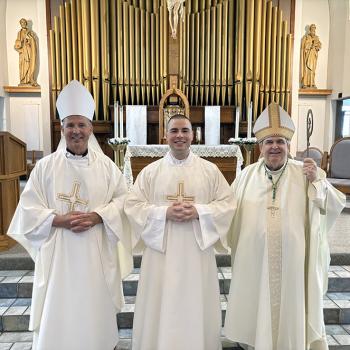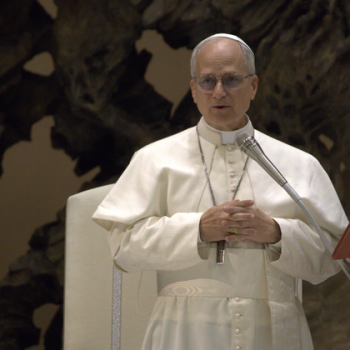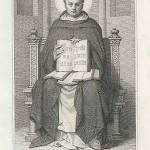Towards the end of his life, Thomas Aquinas began his third summary of the theology of the Catholic Faith. The first, and the most detailed, was his Summa Contra Gentiles, which he wrote to refute the “gentiles”—which is to say, Averroes and Avicenna, who were smart cookies but held erroneous views about Aristotle (at least from a Catholic point of view) and were unintentionally poisoning the well for Thomas and other Catholic Aristotelians. I’ve tried reading parts of the SCG, and it is not for the faint of heart.
Next came his famous masterpiece, the Summa Theologiae, which he did not quite finish. The ST has a distinct and memorable form. For each point of theology, Thomas states all of the objections to it, and sketches the arguments for them; then he states the point of theology, and gives an authority for believing it from scripture or the fathers of the church; then he sketches his own argument for it; and then he sketches his arguments against each of the objections. There are a number of humorous pieces floating about the web, written in the style of Thomas Aquinas, and they all follow this form.
The essential thing to know about the ST is that the arguments presented in it are (as I indicated above) no more than sketches of arguments presented in full elsewhere (and often by other authorities). It was never meant to stand alone, but to be at once a statement of Catholic theology and a kind of index to the relevant authorities: a convenience and aid for new students of theology.
And then, toward the end of his life, he began the Compendium Theologiae, a much shorter and simpler statement of Catholic theology intended “for the sake of those whose time is taken up with the cares of daily life,” that is, those who could not devote the majority of their time to study. The CT is written in a simpler style, and omits most of the objects. The arguments are presented even more briefly, and with less discussion.
All of this makes the CT deceptively more approachable than the ST or SCG. The first two “chapters”, in which Thomas explains what he is about, are straightforward and pleasant; and then, in the third “chapter” he drops you in the deep end without any kind of life preserver save your faith in the Almighty
The CT truly is more approachable, mind you; but though it is written in bite-sized pieces, it is extremely dense. More than that, it assumes (along with all of Thomas’ writings) that the author has some notion of Aristotelian philosophy—as understood by Thomas. For though Thomas made extensive use of philosophy, and was a skilled philosopher, he was writing theology. The philosophy comes in only as needed, but it comes in everywhere, and there’s quite a lot to pick up.
Ultimately, though, the only way to pick it up is to dig in and wrestle with it and ask questions of it; and if you do it in public then sometimes helpful people pitch in and set you straight. So that’s my plan over the next while, is to dig back into the CT, presenting my reflections.
With luck, others will find it interesting too (though I notice no one has responded to yesterday’s post.)
For those who want to follow along, you can find the CT on-line at the link above, and it’s available in print and as an e-book. I’ll generally be using the translation by Cyril Vollert, S.J.











